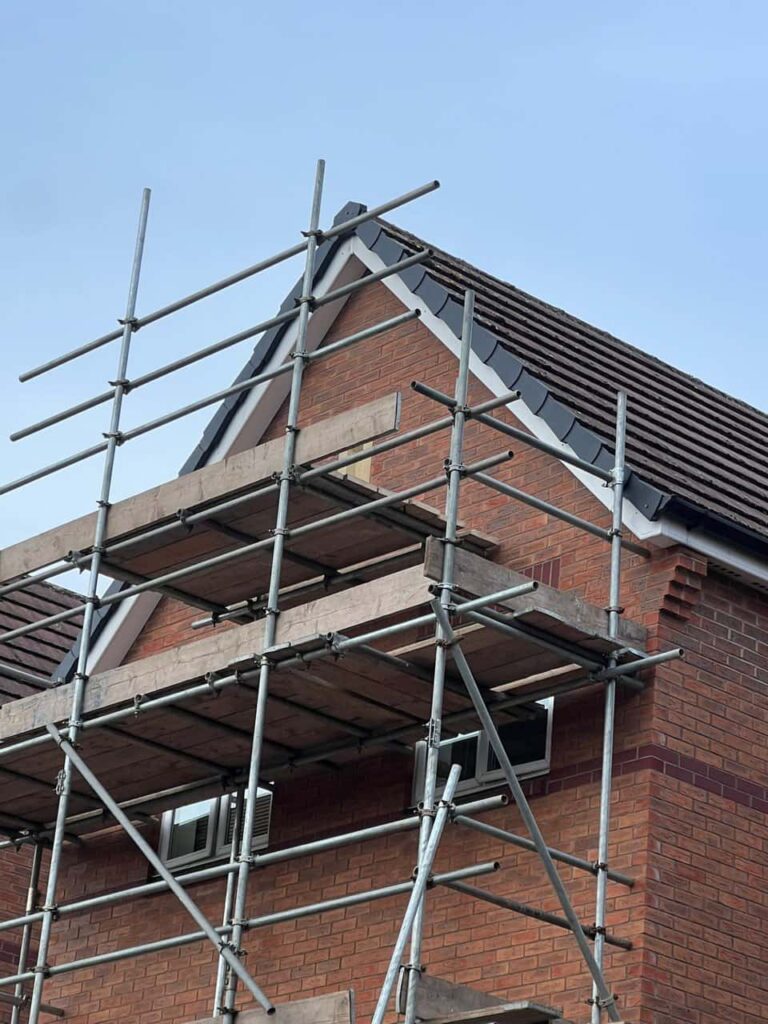Introduction
Flat roofs have long been a popular choice for modern homes, extensions, garages and commercial buildings throughout the UK. But as durable and sleek as they can be, they’re also notorious for one thing—leaks. Over time, traditional felt or asphalt coverings can degrade, crack or lift at the seams, leaving the structure beneath vulnerable to water ingress.
This is where liquid roofing steps in. At Knighton Roofing Repairs, we’ve seen a significant rise in demand for liquid-applied roofing systems across Knighton and Leicestershire—and for good reason. It’s clean, quick to apply, and offers impressive longevity when installed correctly.
So, what exactly makes liquid roofing such a reliable solution for flat roofs? Let’s explore.
What Is Liquid Roofing?
Liquid roofing involves the application of a specially formulated waterproof membrane that’s applied directly onto the existing roof surface. Once it cures, it forms a seamless, fully bonded, rubber-like layer that protects against water, UV rays and thermal movement.
It’s particularly suitable for:
- Flat and low-pitched roofs
- Extensions and dormers
- Balcony and terrace areas
- Repairs or full refurbishment
Unlike traditional roofing systems that rely on overlapping materials or heat-applied membranes, liquid roofing eliminates joints, one of the most common sources of leaks.
Key Benefits of Liquid Roofing
Clean Application
One of the biggest advantages of liquid roofing is that it’s a cold-applied system, meaning no open flames, hot torches or melting equipment are required. This greatly reduces on-site disruption and eliminates many of the risks associated with traditional roofing works.
- Safe for use in residential and commercial settings
- Minimal mess—applied with brushes or rollers
- No burning smells or scorch risks
- Ideal for sensitive locations like schools, hospitals, or terraced homes
The process is tidy, controlled and far less intrusive for homeowners.
Fast Installation
Time matters—especially when your roof is exposed to the unpredictable British weather. Liquid roofing is quick to install and cures in a relatively short period, depending on weather conditions.
Here’s why the speed matters:
- Minimal downtime for your building or property
- Quick emergency response for patching leaks
- Ideal for working around tight access areas or during refurbishment
- Reduces labour time and overall project duration
Because it can be applied directly over existing substrates (in many cases), there’s often no need for full roof stripping, saving both time and hassle.
Highly Durable
Durability is where liquid roofing really shines. Once cured, the membrane offers long-lasting resistance to the main causes of flat roof failure—standing water, UV rays, frost damage and thermal movement.
What makes it so robust?
- Flexible membrane that moves with the roof without cracking
- Resistant to ponding water—no weak points where puddles gather
- UV-stable coating helps prevent ageing and degradation
- Withstands both high summer temperatures and winter freeze-thaw cycles
When installed by professionals with a strong understanding of surface prep and application, the result is a roof that stays leak-free for years to come.
Where Liquid Roofing Works Best
Liquid systems aren’t always a one-size-fits-all fix, but they do offer excellent solutions for several roofing challenges. Here are some prime scenarios where it really proves its worth:
Roofs with Complex Detailing
Flat roofs with lots of awkward corners, vents, skylights or upstands can be tricky to waterproof using sheet systems. Liquid roofing simply flows around these features, creating a fully bonded seal without the need for cutting or joining.
Refurbishment Projects
Rather than stripping the roof back to the deck, liquid roofing can often be applied over the existing surface—assuming it’s sound and well-prepared. This not only saves time and waste but also provides a cost-effective, environmentally conscious upgrade.
Emergency Leak Repairs
Quick-set formulations of liquid roofing products can be used to seal urgent leaks, even in damp conditions. It’s a reliable stopgap that can later become a permanent solution.
Balcony and Walkway Surfaces
Some liquid systems come with anti-slip finishes, making them ideal for exposed walkways, terraces and balconies. Their seamless, watertight finish protects the structure beneath without compromising on usability.
Best Practices for Liquid Roofing Success
To get the most from a liquid-applied flat roof system, professional installation is key. At Knighton Roofing Repairs, we follow strict preparation and application protocols to ensure a long-lasting, flawless finish.
Here’s what a professional approach includes:
- Thorough surface cleaning and inspection
- Removal of loose debris, algae, and old coatings
- Priming the substrate if needed for adhesion
- Application in correct weather conditions
- Allowing proper curing times between coats
DIY applications or rushed jobs often result in premature failures—particularly if the surface is damp, contaminated or poorly bonded.
Conclusion
Liquid roofing is a smart, modern solution for flat roofs that demand both performance and practicality. It’s clean to apply, fast to install, and remarkably durable, making it ideal for both full replacements and targeted repairs.
If your flat roof in Knighton or the wider Leicestershire area is showing signs of wear, bubbling felt or persistent leaks, don’t wait for further damage to set in. At Knighton Roofing Repairs, we offer expert advice, thorough inspections, and dependable application of liquid roofing systems that stand the test of time.
Let’s get your flat roof watertight again—cleanly, quickly, and without compromise. Contact our team today to find out more.
Call us on: 01547 315 099
Click here to find out more about Knighton Roofing Repairs
Click here to complete our contact form and see how we can help with your roofing needs.

